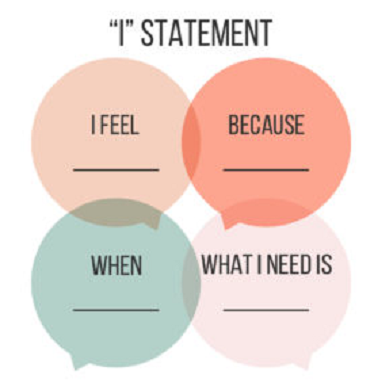What is the 'I Feel' Statement
Misunderstandings in relationships happen to everyone. However, regularly feeling misunderstood can be a sign of a need to work on communication skills.
Changing how we communicate
can improve relationships and help individuals feel understood. One way
to accomplish this is through the use of "I feel" statements, also
known as feeling statements, I-messages, or just I-statements.
" I feel" statements are a way of communicating your feelings or
beliefs. Instead of focusing on the actions or behaviors of the other person, feelings statements focus on how those actions make the
speaker feel.
These feelings statements are a powerful communication tool. Used correctly, they can remove an accusatory tone in your statements and allow you to express your point without getting a defensive reaction.
'I feel' statements can be contrasted with 'you' statements, which are more confrontational and place the blame directly on the listener.
"You never clean up after yourself."
"You didn't call me like you promised!"
"You don't even care."
"I feel stressed out when the house is so disorganized."
"I feel worried when I don't know whether you made it home safely."
"I feel sad when it seems like my feelings are not taken seriously."
How to Use Feeling Statements
I-messages can vary in terms of how they are formed and utilized, and they don't necessarily need to begin with the words, "I feel." While these messages can vary, there are three essential components of a feeling statement:
Stating Your Feeling
This refers to stating the speaker's real feelings only, and it starts with the word "I." I feel ______. When people talk about feelings, they often have a tendency to assign blame first while downplaying the feeling.
For instance, people often say, "You make me so mad," which typically
causes a defensive reaction from the other person at the first word.
When the other person is immediately on the defense, they are less
likely to listen and respond with an open mind.
A feeling statement keeps the focus on the feeling of the speaker which is less likely to elicit a defensive reaction and more likely to promote effective communication.
Connecting the Feeling to an Issue
Once the feeling is stated, it should be connected to an issue or event. For example, a person might say, "I feel angry when I am alone and you are out with your friends."
Although there is some mention of the other person’s behavior, the focus continues to be on the uncomfortable feeling experienced by the speaker. Ideally, this allows the other person to concentrate on helping to alleviate the discomfort, rather than defending themselves.